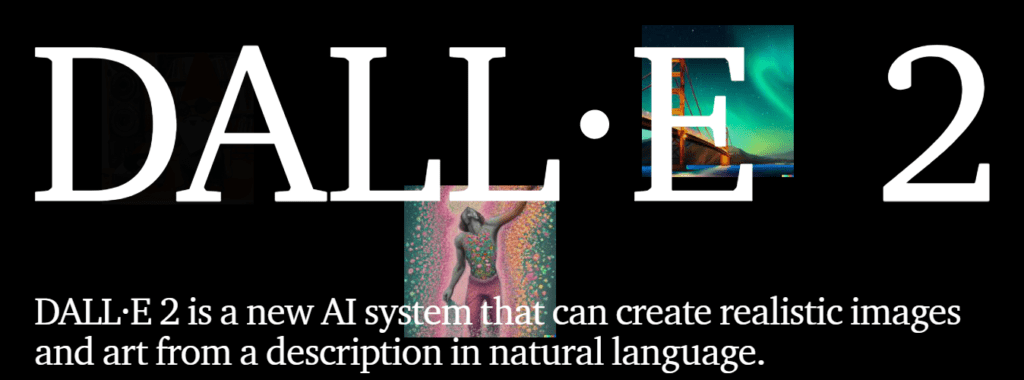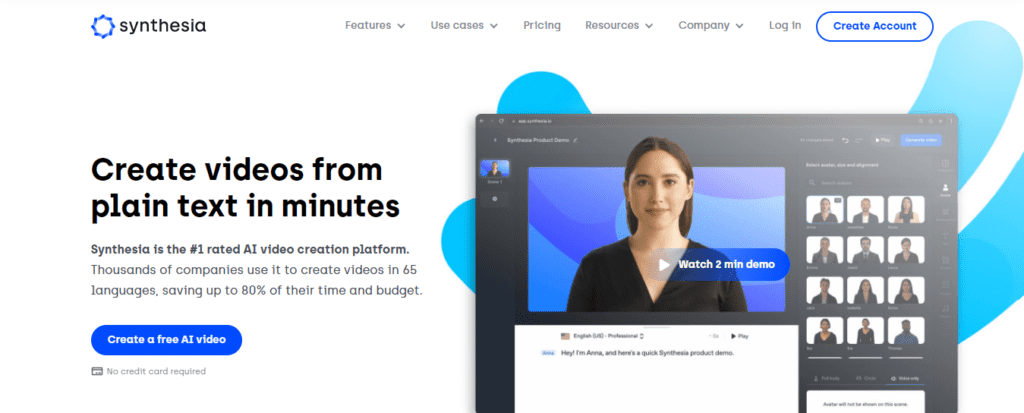O que é IA generativa? Um guia para iniciantes
Artificial Intelligence (AI) has transformed how people handle various day-to-day processes. One of its most intriguing branches is generative AI.
You may already know that various industries, from media and entertainment to healthcare and finance, have been employing AI technologies for a while.
For example, Spotify utilizes AI algorithms and machine learning to power its personalized music recommendation system. Another example is DeepMind Health, a subsidiary of Google’s Health that focuses on applying AI technology to medical research.
But generative AI — it takes things to a whole new level!
Generative AI can create content from scratch. This includes the generation of images, text, and music.
With its ability to generate unique and realistic outputs, generative AI has gained significant attention all around the globe. It’s reshaping the way we perceive and interact with technology.
In this article, we’ll delve into the world of generative AI, exploring its definition, inner workings, applications, challenges, and more. Keep reading to discover the details!
What Is Generative AI?
Generative AI, also known as generative artificial intelligence, refers to a subset of artificial intelligence techniques that focus on creating new and original content.
Unlike traditional AI approaches that rely on predetermined rules and analyzing existing data, generative AI models have the ability to generate new content by learning patterns and structures from a given dataset.
The key concept behind generative AI is the generation of content that is not a direct replica of existing data, but rather an innovative creation.
How Does Generative AI Work?
Generative AI works by using complex algorithms and neural networks to learn patterns and structures from a large dataset. Without me getting into the technical stuff, here’s a simplified explanation of how it works:
- Treinamento: The generative AI model is trained on a dataset that contains examples of the type of content it’s supposed to generate. For example, if the goal is to generate images, the model is trained on an extensive set of images.
- Learning patterns: During the training process, the AI model analyzes the dataset and learns the underlying patterns, styles, and features of the content. It identifies common characteristics and correlations between different elements.
- Generating new content: Once the training is complete, the generative AI model can generate new content by using the patterns and features it has learned. It takes in random input, known as a latent vector, and transforms it into a meaningful output that resembles the examples it was trained on.
- Fine-tuning: To improve the quality of the generated content, the model can be fine-tuned by providing feedback. For example, if the generated images are not realistic enough, human evaluators can rate the quality, and the model can adjust its parameters to produce better results.
- Iteration: The process of training, generating, and fine-tuning can be repeated multiple times to refine the generative AI model and improve its output for a better user experience.
It’s worth noting that generative AI models can vary in complexity and architecture depending on the specific task and techniques in use.
Some popular generative AI models include:
- Generative adversarial networks (GANs) for multimedia generation, such as images and music
- Variational autoencoders (VAEs) for synthetic data generation
- Transformer-based models like GPT (Generative Pre-trained Transformer) for human-like text and content generation
Many AI tools for generating various types of content that you’ll find now use GPT. GPT-4 is the most recent version.
Applications of Generative AI
Generative AI has a wide range of applications across various domains. I’ll go through some notable examples in the sections that follow.
1. Text Generation
Generative AI models can also generate coherent and contextually relevant text based on vast textual data it was fed, including books, articles, and other text-based resources. This has applications in natural language processing (NLP), where it can be used to create conversational agents, generate product descriptions, write blog articles, or even assist in creative writing.
You simply describe to the AI the kind of text you need and it will create it. For example, you can instruct an AI tool for text generation to write a love song, a romance short story, a tweet, and more.
Most of the AI tools for generating text provide templates (for the various types of written content) that you can select from and then provide your input regarding things like the topic, tone of voice, and language.
Others like ChatGPT come with a chat function where you can request text-based assistance. In this case, you’re free to ask them to write anything, paraphrase, or even summarize a long piece of writing into digestible points.
Below is an AI-generated poem:

2. Image Generation
Generative AI models like generative adversarial networks (GANs) can generate realistic and high-quality images. These models have been used in fields like art, design, and advertising to create new visual content, generate variations of existing images, and even assist in the creation of virtual environments.
You simply describe the image you want, and the AI will provide different variations based on the large dataset of pictures it was trained on.
Need an image of the Pope riding a horse, a cat driving a tractor, or a non-existent alien? You got it!
Check this example of an AI-generated image:

3. Voice Generation
If you didn’t know, creating realistic and human-like speech from text is all thanks to generative AI. This technology has seen significant advancements in recent years.
Today, the generation of synthetic voices that are difficult to distinguish from real human voices is possible.
AI voice generation can be used in various industries. These include entertainment, gaming, virtual assistants, audiobooks, and accessibility tools for users with speech impairments.
For instance, voice assistants like Siri, Alexa, and Google Assistant rely on generative AI to provide spoken responses to user queries. What’s more, this technology, brought forth by AI voice generators like Murf.ai, has given birth to faceless YouTube channels.
YouTubers can create various types of videos without actually speaking in them. All you need to do is put together a set of relevant slides, clips, or animations to accompany the voice, and voila!
However, the development of generative AI in voice synthesis has also raised ethical concerns. Someone can easily misuse the technology to create deepfake audio, where someone’s voice is convincingly imitated without their consent. This has implications for fraud, impersonation, and misinformation.
4. Music Composition
With the help of generative AI, it’s possible to compose original music. The models are able to do so by learning from existing compositions.
They can generate melodies, harmonies, and even complete musical pieces. AI-generated music simplifies music production and helps provide soundtracks for movies or games or background music for marketing videos.
5. Video Generation
This is like a combination of AI-generated text, images, voice, and music. While AI video generation hasn’t been perfected, it’s still possible to create a video using AI.
The reason I say it’s not there yet is that most video-generation AI of the current time can create specific types of videos, which are talking head videos.
Through generative AI, you can make realistic and expressive virtual characters, called AI avatars, that can speak out words or even interact with other people. These avatars are designed to mimic human-like facial movements, expressions, and speech patterns.
These kinds of AI-generated videos work well for explainer, educational, and promotional videos that require a presenter. All you need to do is find the right tool, choose the avatar that suits your video preferences, and input the text you want it to say.
Most of the available AI video generation platforms provide a wide variety of AI avatars. You can find them by gender, age, race, and more.
AI avatar talking heads can be used for digital actors in movies, TV shows, and video games. This technology allows for the creation of virtual characters that can convincingly deliver lines and portray emotions without the need for human actors in specific scenarios.
This technology also poses a risk if misused. Picture your favorite celebrity calling you by your name in your private messages (someone may fall for the trap!)
Challenges and Limitations of Generative AI
While Generative AI has shown remarkable capabilities, it also faces several challenges and limitations. Here are some of the key ones:
- Quality and coherence: While the models undergo continuous improvement, generating high-quality and coherent content can be challenging for them in some cases. They may produce outputs that are visually or contextually inconsistent and lead to unrealistic or nonsensical results.
- Bias and unfairness: The existing data that generative AI models learn from may contain biases. These biases and societal inequalities can be reflected in the generated content.
- Data dependency: Generative AI models heavily rely on large and diverse datasets for training and the quality and diversity of the training data can affect the generated content. Limited or biased training data can result in suboptimal or biased AI output.
- Computational resources: Training and running generative AI models can be computationally intensive and require significant resources, You need powerful hardware and large amounts of memory and such requirements limit the accessibility and scalability of these models.
- Considerações éticas: Various concerns exist when people talk about generative AI, such as the potential for misuse, deepfakes, and the creation of misleading or harmful content.
Addressing these challenges requires ongoing research and development. Techniques such as data augmentation, regularization, and adversarial training can help boost the quality and diversity of generated content.
There’s a need to employ ethical guidelines, bias detection, and mitigation strategies to ensure the responsible use of generative AI. Continued efforts to improve interpretability and control over generated output are also essential for building trust and confidence in these models.
Generative AI Tools
Various generative AI tools are available, some free, others paid, or a mix of both options.
Jasper AI (for text)

Jasper is one of the best AI tools at the moment for generating AI content. It’s a tool I have used myself to create text such as blog titles, meta descriptions, and headlines.
But that’s not all. Jasper can help you write full-length blog posts or marketing content like product descriptions, social media posts, and emails. On top of that, there’s a chat feature that enables you to request any kind of text from Jasper.
As if that’s not enough, Jasper offers a tool for generating images. You can create images of human faces, nature, food, houses, animals, or anything else.
DALLE-E 2 (for images)

DALL-E 2 is an advanced image generation model developed by OpenAI. It’s the successor to the original DALL-E model and represents a significant improvement in terms of image quality and diversity of outputs.
One of the key features of DALL-E 2 is its ability to generate highly detailed and realistic images from textual descriptions. This means that given a prompt or a description, DALL-E 2 can generate an image that corresponds to that description.
For example, if you provide a prompt like “a purple elephant with butterfly wings,” DALL-E2 can generate an image that matches that description.
DALL-E2 allows for image editing and manipulation. It can take an existing image and modify it according to your instructions. For instance, you can enter a prompt asking DALL-E2 to change the color of an object in an image or add specific elements to it.
Synthesia (for videos + voices)

Synthesia is an AI-driven video synthesis platform that specializes in generating lifelike videos of people speaking or presenting in different languages and with various expressions. It uses generative AI techniques to create these videos by combining pre-recorded footage of a person’s face with text input.
This AI tool also uses text-to-speech (TTS) technology to convert any text input you provide into spoken words. Its AI model generates the corresponding audio and then synchronizes it with the video.
The resulting video will be a pre-recorded face that appears to be speaking the provided text. To top it all, automatic closed captions are included in the video!
Mike Stuzzi’s List of Generative AI Software
I’ll now share articles about some of the top AI generation tools for different multimedia types that I’ve already reviewed on this site. They include those for generating text, images, voices, videos, and more.
Categorized generative AI software reviews (best of):
- Best GPT-3 Tools
- Melhor software de escrita de IA
- Melhores geradores de texto de IA
- Best AI SEO Writers
- Melhores ferramentas de redação de IA
- Best AI Paraphrasers
- Melhores geradores de arte de IA
- Melhores geradores de tiro na cabeça de IA
- Melhores geradores de vídeo de IA
- Best AI Voice Generators
- Best AI Short Clip Generators
Individual generative AI software reviews:
- Revisão de IA do Jasper
- Revisão de arte de Jasper
- Revisão de Copy.ai
- Jasper vs Copy.ai
- Revisão de qualquer palavra
- QuillBot Review
- Revisão do Spin Rewriter
- WordAI Review
- WordAI Alternatives
- Alternativas de Spinbot
- Alternativas ao Speedwrite
Conclusão
In conclusion, generative AI is a powerful technology that has the ability to create new and realistic content, whether it be images, videos, or voices. It utilizes complex algorithms and deep learning techniques to generate data that resembles real-world examples.
With its potential applications in various industries such as entertainment, gaming, virtual assistants, and more, generative AI is poised to change how we create, interact with, and experience digital content. However, it also presents challenges and concerns that need to be taken care of as the technology evolves.







